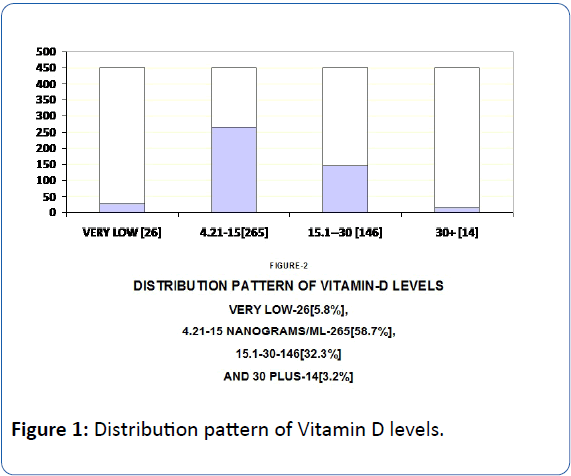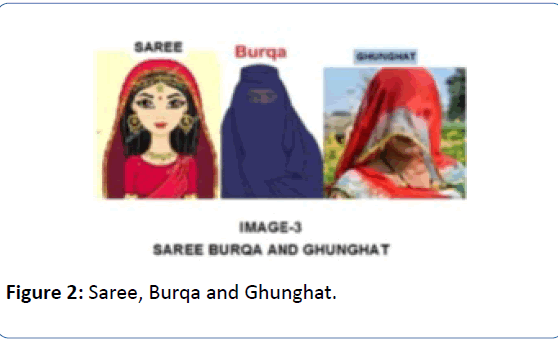Gokhale SG*, Kadrekar Meena and Gokhale Sankalp
Department of Pediatrics and Neonatology, Rajhans Hospital and Research Center, Saphale, India
Corresponding Author:
Gokhale SG
Department of Pediatrics and Neonatology
Rajhans Hospital and Research Center, Saphale, India
Tel: 091-800-779-8400
E-mail: rajhanssanjay@gmail.com
Received date: August 02, 2017; Accepted date: August 10, 2017;; Published date: August 14, 2017
Citation: Gokhale SG, Meena K, Sankalp G. Estimation of Vitamin D levels in women of child bearing age group from countryside: A retrospective observational analytical study. Arch Med. 2017, 9:4. doi: 10.21767/1989-5216.1000235
Letter to Editor
In spite of abundant sunlight Vitamin-D deficiency is quite common in Middle East, Asian countries and India [1-3]. Many Indian studies are available recruiting mainly urban population. We went to determine status of Vitamin-D deficiency in local population. Here people are engaged in agricultural activities, no industrial pollution either. This is probably first study focusing on country side population.
We collected data about Vitamin-D levels in women of child bearing group from record section starting November 01, 2014 to December 31, 2016. Blood samples for Vitamin-D/ Hemoglobin estimations were collected by peripheral venepuncture. Hemoglobin was estimated by standard Drabkin’s Reagent Method. Vitamin- D levels were estimated by LCMSMSLiquid Chromatography Tandem Mass Spectrometry [4]. This technique and machine measures serum vitamin-D levels beyond 4.2 monograms/ml. So values less than 4.2 nanograms/ml are read as UNDETECTABLE.
There were 451 participants; their age ranging from 18 years to 49 years (Figure 1).

Figure 1: Distribution pattern of Vitamin D levels.
Only 14 Women had Vitamin-D levels more than 30 ng/ml [9/451=3.01%]. Only 46 women [46/451=10.2%] were holding office/indoor jobs; 405/451 worked [89.8%] in open fields/ busy in agricultural activities. 26 women [5.8%] had very low or Undetectable Vitamin-D levels, 265 [58.7%] had Vitamin-D levels more than 4.2 but less than 15 and 146 participants [32.3%] had Vitamin-D levels more than 15, but less than 30 nanograms/ml. Only 14 women [3.2%] had vitamin- d levels more than 30. 12 were unmarried and did not have children. One was married but non-pregnant 280/451 participants were first para, 155 had two babies, two had five children, and one was grand multipara [8 babies]. 37/451=8.12% had reasonable hemoglobin levels at or more than 12 gms/dl. Only 3.01% showed vitamin-D more than 30 ng/ml, or in other words 96.89% moms were vitamin-D deficient.
The problem of vitamin-D deficiency with abundant sunshine is multifaceted. Serum levels of Vitamin-D more than 30 ng/ml (to convert ng/ml to nmol/ml multiply by 2.5) are considered as ‘normal’. Levels between 20 and 30 ng/ml are defined as ‘insufficiency’ and levels less than 20 ng/ml are defined as ‘deficiency’ [5]. Genetic factors like-Genetic variability of Vitamin-D Binding Protein and ‘HIGH 24-25 HYDROXYLASE ENZYME ACTIVITY’ seem to be operating [6-8]. Additionally women wear cultural dresses like Saree, Ghunghat or Burqa covering entire body with NO exposure to sunlight (Figure 2).

Figure 2: Saree, Burqa and Ghunghat.
Many people are not aware of benefits of Vitamin-D and sunlight.
Could this be an adaptation, or an evolutionary change to prevent excessive levels of vitamin-D? Irrespective of etiology, the magnitude of the problem is significant and deserves implementation of preventive measures.
20138
References
- Nicolaidou P, Hatzistamatiou Z, Papadopoulou A, Kaleyias J (2006) Low Vitamin D status in mother-Newborn pairs in Greece. Calcif Tissue Int 78:337-342.
- Paxton GA, Teale GR, Nowson CA, Mason RS, McGrath JJ, et al. (2013) Vitamin D and health in pregnancy, infants, children and adolescents in Australia and New Zealand: A position statement. Med J Aust 198: 142-143.
- Holick MF (2011) The Vitamin D solution. Penguin Group First Plume Printing, pp: 149-151.
- Zaidi S (2012) Power of Vitamin D. 1st Indian edn., STM Publishers, Mumbai, India, pp: 149-176.
- Londhey V (2011) Vitamin D deficiency: Indian scenario. J Assoc Physicians India 59: 695-696.
- Awumey EM, Mitra DA, Hollis BW (1998) Vitamin D metabolism is altered in Asian Indians in the southern United States: A clinical research center study. J Clin Endocrinol Metab 83:169-173.
- Fu L, Yun F, Oczak M (2009) Common genetic variants of the vitamin D binding protein (DBP) predict differences in response of serum 25-hydroxyvitamin-D[25(OH)] to vitamin D supplementation. Clin Biochem42:1174-1177.








